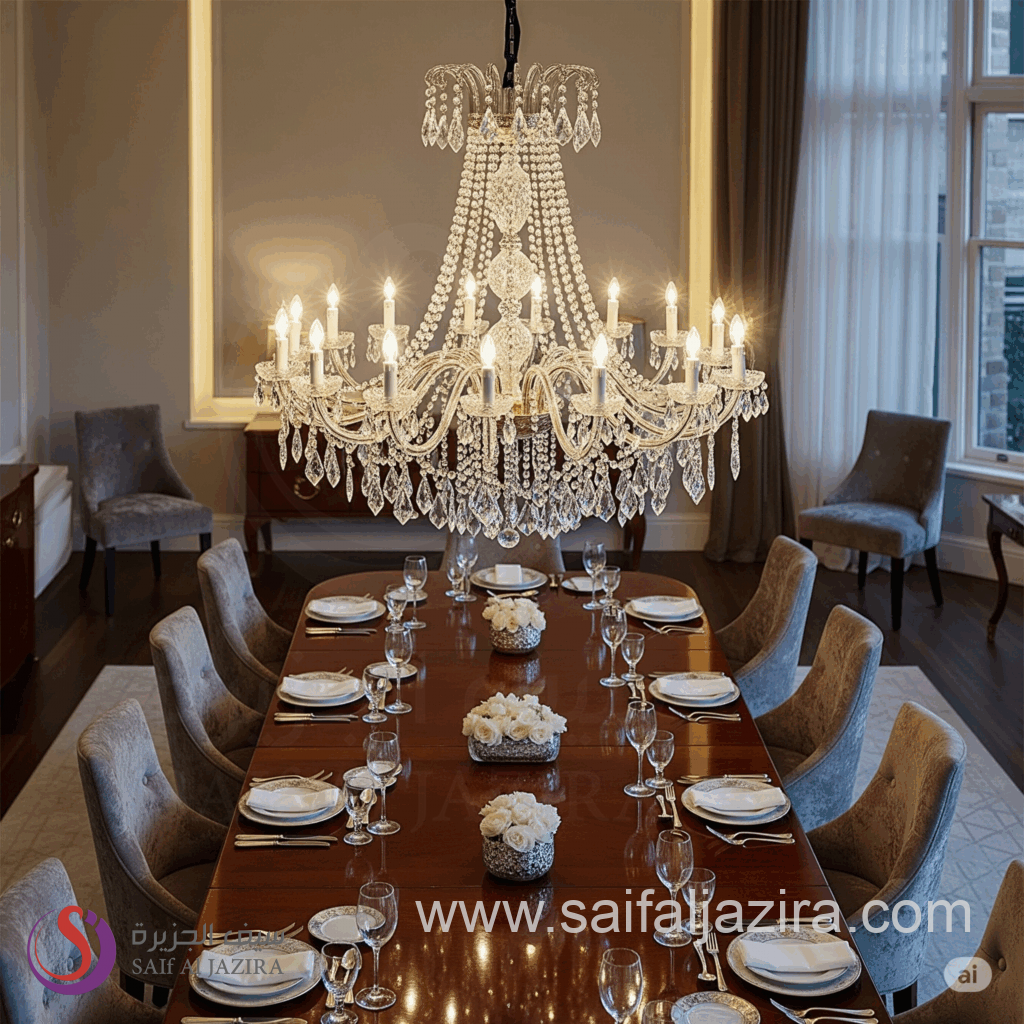A chandelier is a powerful visual element that instantly captures attention and enhances a room's ambiance. To ensure it integrates perfectly with your home's decor, it's essential that it aligns with the overall style and materials already present in the room. When selecting a chandelier, don't just focus on its aesthetics, but also on how harmoniously it complements the space's overarching character.
Modern and Urban Styles
Modern Interior Style: This style is characterized by minimalism, clean lines, and thoughtful simplicity. In such spaces, elegant, understated chandeliers, often crafted from metal or glass, are ideal choices. Urban Style: This aesthetic stands out with its playful and creative spirit, offering bold combinations of materials and shapes. The perfect choice here could be either traditional crystal chandeliers or contemporary pieces with daring and distinctive designs.
Glamour, Country, and Provencal Styles
Glamour and Chateau Style: This style embodies luxury and grandeur. Crystal chandeliers are the quintessential choice here, elevating the interior to an even higher level of sophistication. Country Style: Brings warmth and comfort to the home. Natural materials like wood and textiles create a cozy atmosphere, and chandeliers in this style are often soft and rustic, enhancing the welcoming feel. Provencal Style: Infuses the charm of the French countryside into your home with its soft colors and natural materials. For this style, we recommend lighting fixtures with a romantic touch, featuring delicate decorative details, a patina finish, and elegant curves.
Industrial and Scandinavian Styles
Industrial Style: This style highlights the use of raw, unrefined materials such as metal, concrete, and wood. Chandeliers in this aesthetic are inspired by industrial environments, with designs reminiscent of old factory lighting, bringing a strong, bold character to the interior design. Scandinavian Style: Favors natural materials and simple geometric shapes. Smooth glass chandeliers or white metal fixtures fit perfectly into this clean and functional design.


